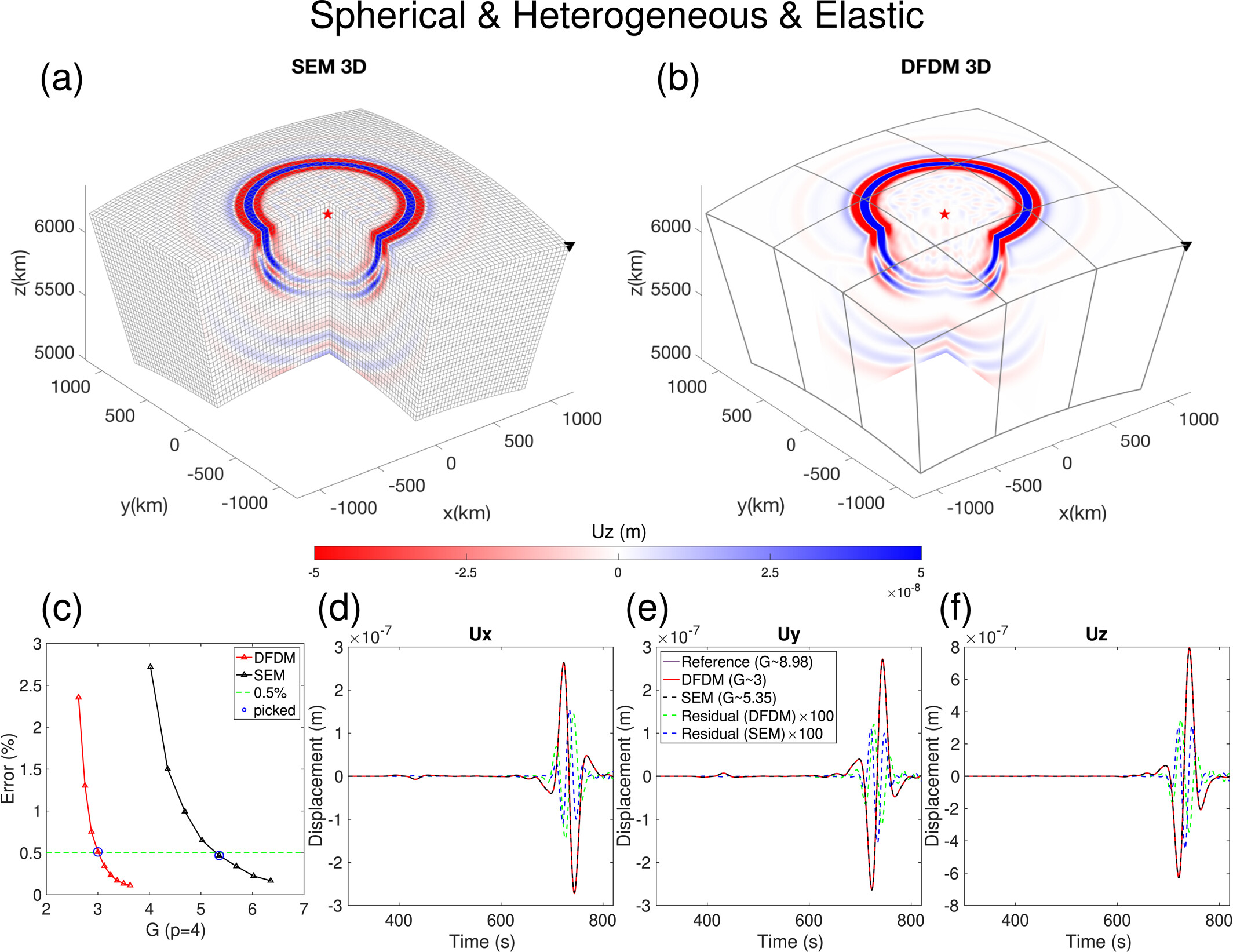An unsually large ULVZ at the base of the mantle near Hawaii
Here we show remarkable features in the waveforms of S/Sdiff phases of western Pacific events observed at stations in North America that indicate the presence of a very large ultra-low-velocity-zone (ULVZ) at the base of the mantle, centered ~11° to the southwest of Hawaii, within and near the northern border of the Pacific LLSVP. Waveform complexities include strongly delayed (> 30 s) postcursors. Measurements of travel times, beamforming analysis of out-of-plane energy, and full waveform comparisons with 3D numerical simulations, constrain the location, lateral extent, height and velocity reduction of the ULVZ with some level of trade-off. The simplified 3D model consists of a cylindrical ULVZ with a large aspect ratio of ~ 20 km in height and ~ 910 km in diameter at the CMB. The shear wave velocity reduction is 20%. This is to our knowledge the largest ULVZ mapped to date and the first time the lateral extent of a ULVZ has been constrained with some precision. Its location suggests that it may be the root of a long-lived, stable plume responsible for the Hawaiian volcanic chain, the hotspot track with the largest buoyancy flux.
Abstract
Previous studies have documented the presence of ultra-low-velocity-zones (ULVZs) at the base of the mantle, through observations of body wave complexities. Geometrically their heights are in the range of ~5-30 km, while little is known about their lateral extent beyond about 10^2 km, due to limitations in sampling. Here we show remarkable features in the waveforms of S/Sdiff phases of western Pacific events observed at stations in North America that indicate the presence of a very large ultra-low-velocity-zone (ULVZ) at the base of the mantle, centered ~11° to the southwest of Hawaii, within and near the northern border of the Pacific LLSVP. Waveform complexities include strongly delayed (> 30 s) postcursors. Measurements of travel times, beamforming analysis of out-of-plane energy, and full waveform comparisons with 3D numerical simulations, constrain the location, lateral extent, height and velocity reduction of the ULVZ with some level of trade-off. The simplified 3D model consists of a cylindrical ULVZ with a large aspect ratio of ~ 20 km in height and ~ 910 km in diameter at the CMB. The shear wave velocity reduction is 20%. This is to our knowledge the largest ULVZ mapped to date and the first time the lateral extent of a ULVZ has been constrained with some precision. Its location suggests that it may be the root of a long-lived, stable plume responsible for the Hawaiian volcanic chain, the hotspot track with the largest buoyancy flux.
Download
Download the paper here



